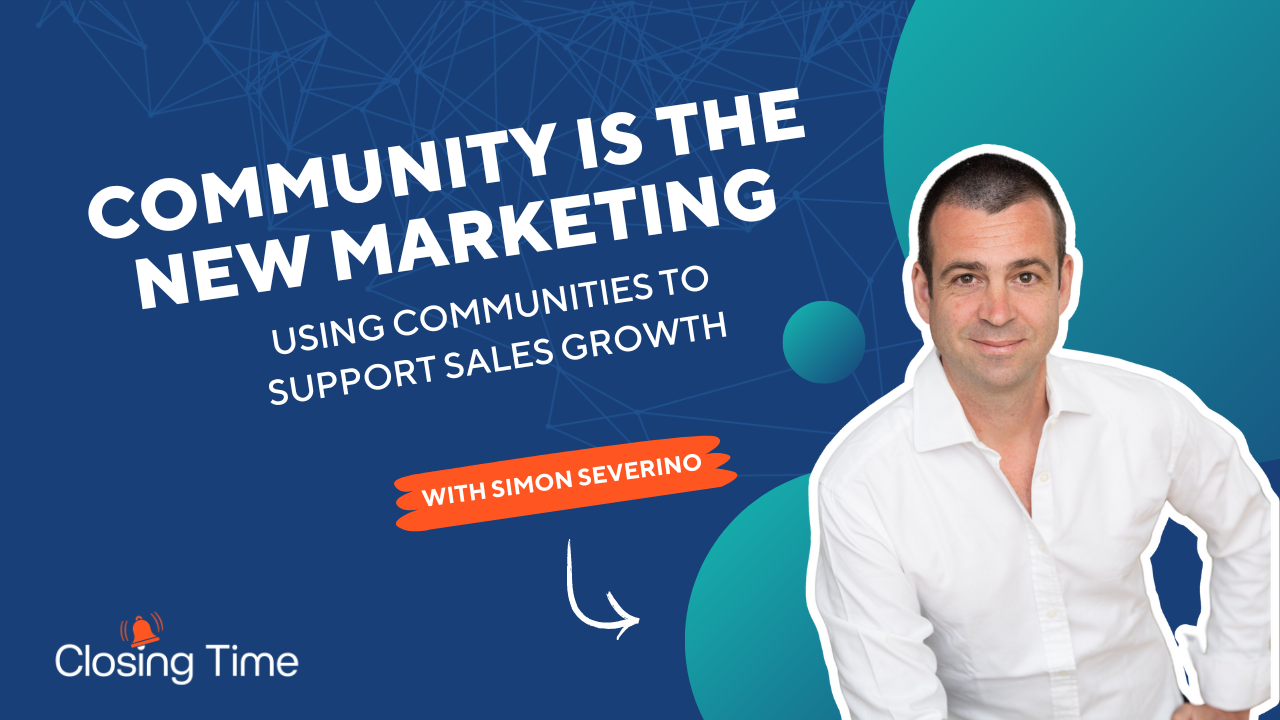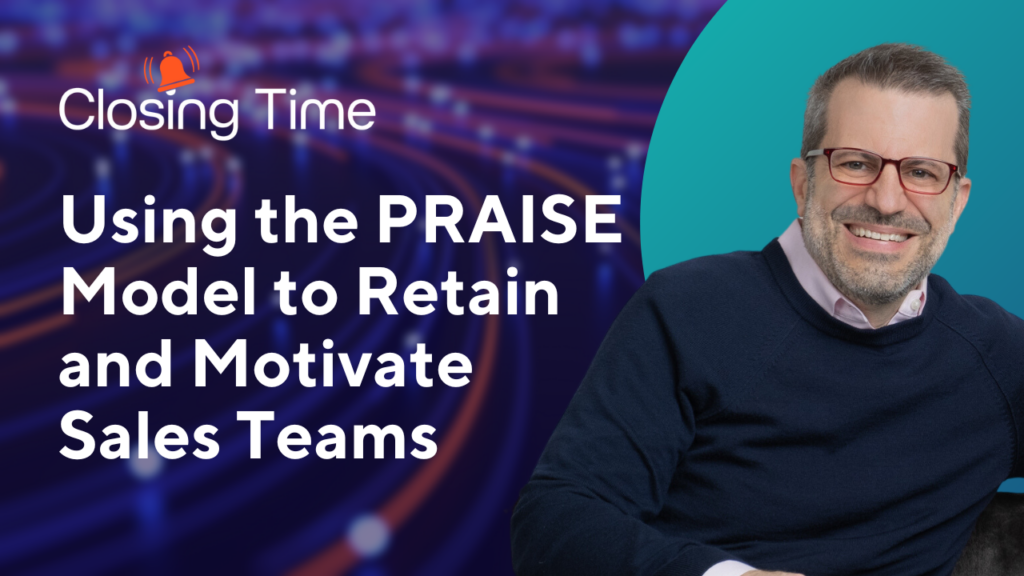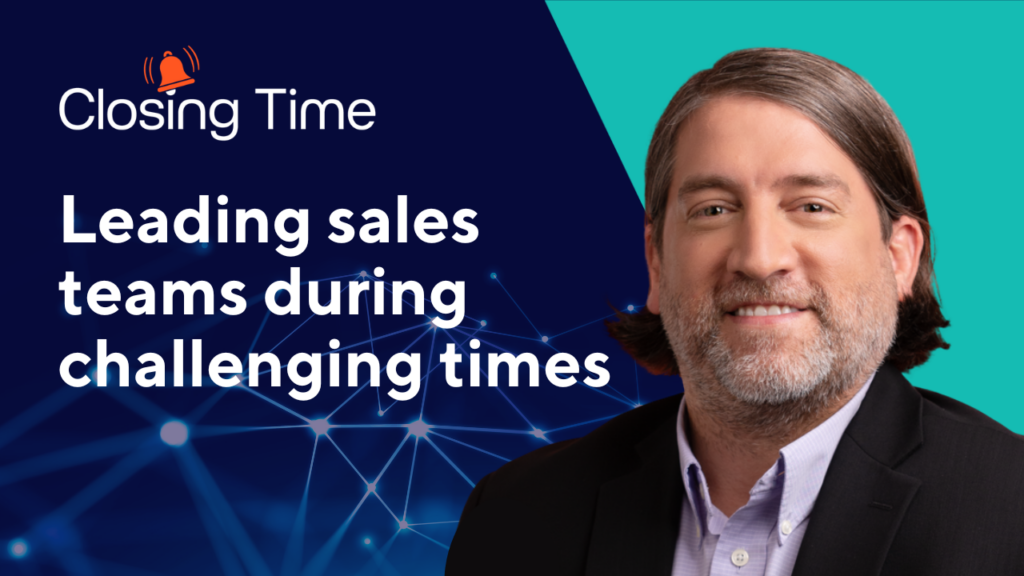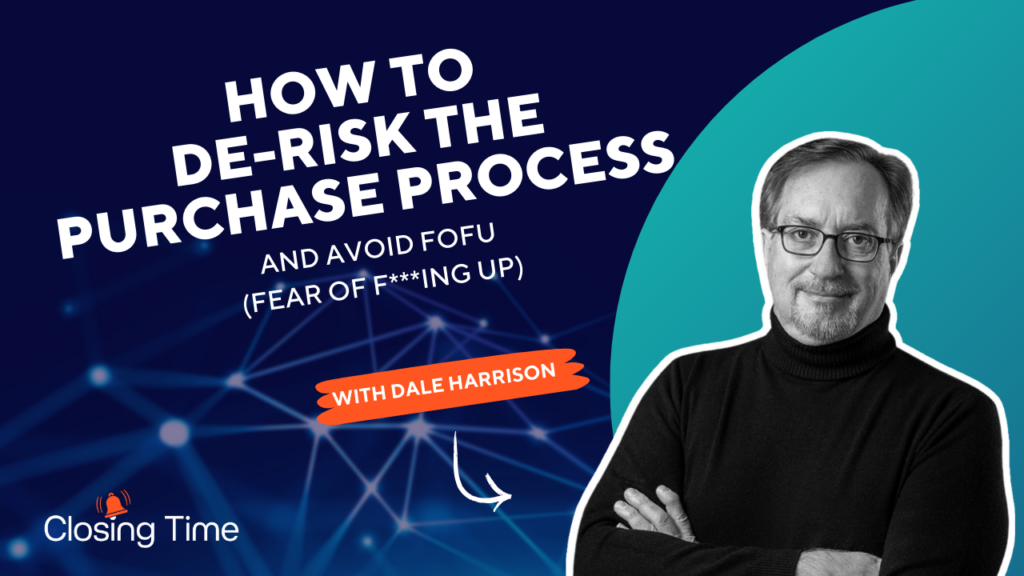How can sellers invoke community, both internal
and external, to de-risk the sales process?
Let’s talk about it on this episode of Closing Time.
Welcome to Closing Time, the show for. Go to Market Leaders.
I’m Val Riley, head of Content and Digital marketing at Insightly CRM.
Today, I’m joined by Simon Severino, CEO, business advisor and author of Strategy
Sprints 12 Ways to Accelerate Growth for an Agile Business.
Simon, most sellers
would agree that the past two years have been a bit rough going.
Buyers are just more cautious than ever, and sellers have had to shift from selling
just on ROI and value to also de-risking the buying process for them.
Yes, buyers are getting more cautious and everybody’s
having a sale slump right now.
We see two things.
One is the buyers are more cautious in general,
Is this an investment or just a cost position?
If it’s a cost position, let me cut it.
And if it’s an investment, they take more time to decide
which makes sense, and
they discuss it with more stakeholders inside the organization.
They have more committees about it.
So it’s both a sales slump in general, but also a specific sales time prolongation
and that that is a tough pill to swallow for many sales teams right now.
So it feels like there’s an education piece here for our sellers
that maybe they didn’t have to know five years ago, but now is absolutely part
of the way we need to train up sellers to be successful.
Yes, it’s two things.
One is you have to learn
to accept the buying rhythm of the buyer
and let go of your expectation
of what a buyer rhythm is.
So that’s one thing, becoming more buyer centric than seller centric.
The second part
is you can
shorten the sales time by creating 15 to 17
valuable experiences for the buyer in a shorter time.
You can create them actually in 15 to 17 days.
If you use a good combination
of video prospecting,
valuable materials that you send and this is something that we implement
with our clients too, we call it the RBS, the relationship building sequence.
If in the first 17 days
of them downloading something on your website
or commenting on your post, if you give them
those 17 experiences in 17 days, you can shorten the sales time by 25%.
One of the things we talked about
is community as a way to de-risk the buying process,
and I like how you’re approaching the word community from multiple angles.
So first, let’s talk about what a community looks like
inside of a sales team.
What we are doing right now with larger teams,
we’re having a sprint right now where a sales team has 15 countries
where they sell mainly one product to
now those teams having a sales slump.
They are a little bit low in motivation right now.
So what we started, we asked, I said, okay,
how can we bring back the fun
in hunting, the fun in prospecting?
And turns out hunting
historical was never done by one person alone.
Humans are hunting
in tribes of tribes since forever.
That’s most of our history.
Most of our human nature is hunting big game together
because you have to hunt it and you have to also carry it home.
And if it’s a huge mammoth, you need more people.
So it’s very natural.
We started Quests of 60 Days, a prospecting quest of 60 days
across 15 teams, a closing challenge of 15 days.
So you create competition
and sales people like competition.
Let’s be honest, we love that we are competitive people
and so it’s our element.
And if you give it the time 60 days and a leaderboard
and a supporting structure and you visualize the progress
that creates such a positive energy and a communal spirit.
And one thing that de-motivates is when you get a no, and you’re alone out there.
But if it’s a collective endeavor that is actually super
motivating and teams love it, so the motivation is higher.
The number of calls is higher,
and then it becomes just a mathematical game, because
when you increase the volume of calls, you are increasing the win rate.
I love the gamification angle and I’ve never heard someone describe
sales the way you just did where akin to hunting in packs,
because I do think that that camaraderie really does show up.
We had a competition among our sales people
and the prize wasn’t really that spectacular,
but it was the community it created around everybody competing for the prize
that made folks super engaged in the competition.
Yes, we don’t even have prizes because our experience is
it’s not about the prize, it’s about the game.
And, you know, if you are in a CrossFit class
and you have this leaderboard, there is nothing to win.
Everybody is suffering in CrossFit class.
But being up there, that’s what CrossFitters like.
And this is what salespeople and honestly, every athletic person
or every ambitious person, every performance oriented person
likes to be on the leaderboard, likes the game itself,
the process of moving towards winning and winning.
This is what we are here to do.
Simon, From a practical sense, can you talk about things that sales teams
can do every week or every day to really create a culture of opportunity creation?
We installed with our clients two meetings per week.
Typically on a monday they will have a 60 Minutes pipeline
review meeting where everybody reports
these are the opportunities that I created this week.
And if they’re not in sales, they report these are the opportunities that I
have noticed this week
in the client work or from my perspective.
And then some of those opportunities will be picked
for the second meeting, which is usually on a Thursday or Friday.
It’s the Deal review meeting and that is coaching each other,
helping each other really win that deal.
It can be sales role plays, can be practicing the talk tracks.
We might look at the percentage of talking time we want salespeople
to have less than 30% talking time and the buyer to have 70% talking time.
This is something that needs practice and really practice.
Those things happen in the deal review meeting.
If you install those two meetings, pipeline review and deal review,
you are creating week by week
a culture of opportunity creation, and that makes a huge difference.
Simon, let’s talk a bit about the external side of community.
What impact does an active user community have on the sales process?
Yes, So think about you’re taking a decision.
You have to buy a CRM.
You Google two
different CRMs, three different CRMs, you look for reviews,
and then one of them has a ton of YouTubers posting content about it.
And the other one nothing.
Which one will you buy?
I buy the one that has YouTubers
creating content about it for different reasons.
First, if I encounter a bug, a problem, something
I can look it up easier.
Second, if they have a vibrant community, people creating content for them,
this will de-risk the decision for me
because the risk of them going out of business is lower.
And also it can be much more fun because they seem to have fun
and I want to spend my time with people that have fun.
So I think fun is also something very, very under valued in sales.
It’s not, life is not that serious.
We are here to have fun and buying is an emotional process
and buying is a decision of who are you bringing into your life.
So if they’re having fun and you see a vibrant community
that definitely de-risks.
A lot of times it’s hard to get
resources allocated
for that work because measuring the effectiveness
of fostering community, it feels a little obscure.
So do you have any tactics or ways that
marketers or I guess, or salespeople
can encourage a company to invest in community?
Oh yeah.
So I would encourage people to stay longer on the community and endeavor side
and to measure three things in three different stages by user.
So every user, you have to think in three stages.
The first one is activation.
The second is engagement and the third one is resurrection.
So in activation, it’s
about creating the best possible onboarding experience.
For example, in our community, the 200 K Club, when somebody enters.
We have a welcome shower.
We think about what’s the best possible
welcoming experience, and I write a welcoming text
that is so long and I take an hour per new member
in the 200 K Club to really
describe them to the others who they are, what’s their superpower?
Where they come from, what do they bring to the community?
How you can use them, what do they need?
So in activation, it’s about creating a welcoming experience,
then creating a safe space, and how do we create a safe space?
You help them comment on the posts of others first,
because usually it’s a digital community where most of
the communication takes place in our case is Slack or Discord.
So in those you have to help comment on other people post and support
what others are doing, that’s activation stage and then ask their first questions.
Then engagement stage is where they contribute and create and support.
In activation, you pick some of the tallest trees, they become the leaders.
So if your community is a forest,
there are many trees and some of them stand much taller.
And so those 3% you invite to become a leader, they can be ambassadors.
They can be moderator, you give them leadership roles inside of the community.
That’s
the middle stage, engagement.
If you do that, you’ll keep them engaged longer.
At some point they will still fall asleep and become passive.
This is when you move, when you have to do the resurrection activities.
So, for example, we have built AI companion
that sees early signs of
pausing, of inactive behavior
and says, Hey, when was your last coffee with another community member?
Can I schedule you with somebody?
So it starts scheduling coffee calls, bilateral calls between members.
And so that’s the resurrection stage where you try to reactivate them
before they drop out, because if you don’t do that, they will drop out.
So kind of have one final question for you.
It feels like on the internal side, maybe when we were talking about,
you know, competitions amongst the sales team and that really
that might be owned by a sales enablement group, and external community
maybe would be owned by marketing or customer marketing.
How do you see that in practice and in real world organizations?
I think community is the new marketing.
So think from the buyer’s perspective, from the buyer,
you’re thinking, Should I go with this software or that software?
You start Googling, you end on YouTube, you’ll find communities,
you buy the product.
So if you think it’s from that side, you want to see a buzz,
you want to see, if you are thinking,. Do I go to that restaurant
or that restaurant, you want to see it buzzing right?
You pass by.
You can smell the love in the kitchen and you see a waiting list.
That’s the restaurant where you want to go eat.
So if we think it from the buyer
side, doesn’t really matter who owns it, internally.
It’s much more important to look in activation stage and in engagement stage.
Who are the trees that stands taller
and give them leadership positions independently
if they are internal people or external people, it’s community people.
So it might be your clients, might be your vendors that get leadership positions.
In terms of who owns it in the organization,
the person that
measures those three metrics, the activation
metrics, the engagement metrics and the resurrection metrics.
That person owns the community and is responsible
for internal reporting and improvement and writing down the SOPs, the processes.
That’s really interesting.
I love the restaurant analogy because. I think that really brings it together.
That’s all the time we have for
this episode, really appreciate you joining us, Simon.
Thank you for having me.
And many of the things
that we have discussed people can download for free at strategysprints.com.
Appreciate you giving our listeners
the opportunity to take away some really actionable tips.
Thanks to you all for joining us on this episode of Closing Time.
Remember, you want to subscribe to the channel, like this video,
hit that button for notifications so you don’t miss an episode.
We will see you next week.





